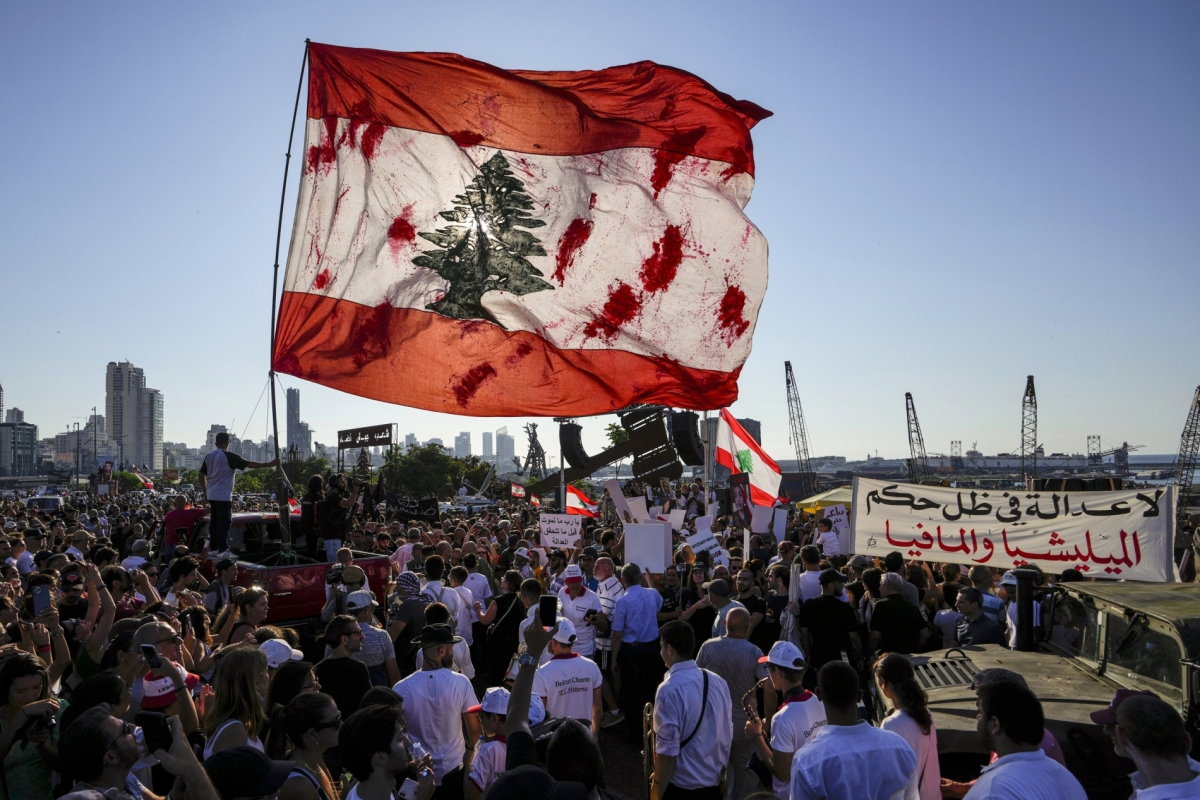A gathering for the 3rd anniversary of the Beirut Port explosion on August 4, photo credit Al Majalla Magazine.
Art has played an influential role in making sense of the loss felt after the August 4 explosion. Tom Young’s “Strong Angels” and other paintings show a human dimension of the tragedy and its civilian heroes, who “join forces to lift the city’s grief,” writes Darine Houmani of Diffah Three (The New Arab). “Despite all its devastation, the August 4 explosion brought greater impetus to preserve our heritage and brought about a database of our historical buildings that hadn’t been done before,” states Mona Hallak, an architect, heritage activist, and director of the American University of Beirut’s Neighborhood Initiative, as cited in The New Arab. Several weighed in on the rebuilding efforts, including Lebanese architect Jad Tabet, who proposed “rehabilitation” rather than “reconstruction,” focusing on preserving the city’s existing social fabric and inhabitants alongside the architecture (for further reading on Jad Tabet and architectural heritage, see Al Jadid, Vol. 4, No, 25, Fall 1998; Vol. 5, No. 26, Winter 1999; and Vol. 24, No. 79, 2020). As art historian and gallery owner Andrée Sfeir-Semler says, “You need to nourish people with art and culture because that is what feeds their souls.”
The renewal of art paints a portrait of the people’s determination to create hope and preserve memory when all else threatens their existence. As the third anniversary of the explosion comes and goes, discussions on how to approach the repairs of the port remain. Beirut’s port has been a part of the city’s history since the 15th century, was mentioned even earlier in the letters of pharaohs, and has served as a valuable economic and cultural center since the Roman era as a trade hub. Motions have been made to tear down the damaged grain silos remaining at the site as part of the port’s reconstruction. However, some argue that they should be preserved “as a memorial to the blast’s victims, a reminder of this outrageous calamity, and a promise to end the impunity that has sunk the country so low,” writes Ursula Lindsey in the New York Review of Books. To many Beirutis, the grain silos symbolize something beyond tragedy. Perhaps this is a sentiment not so different from what compelled Sursock Museum’s architect Jacques Aboukhaled to preserve parts of the building’s damaged ceilings during its reconstruction: “It’s important to keep something from this disaster,” he says, “The fact that I’m Lebanese, I’m happy to contribute, and this is what we have to do for our children and the next generations. I think this is important. To keep our heritage and our history, it’s important.”
To read “Arab Architectural Heritage Between Mirrors And Idols” by Jad Tabet (Al Jadid, Vol. 4, No. 25, Fall 1998 and Vol. 5, No. 26, Winter 1999), click on the link below:
Edited excerpt from Naomi Pham’s “Lebanon Still Overshadowed by Oblivion As Port Blast Aftermath Enters Fourth Year,” which appeared in Al Jadid Magazine, Vol. 27, No. 84, 2023 and Inside Al Jadid Reports, No. 58, 2023.
Copyright © 2023 AL JADID MAGAZINE

